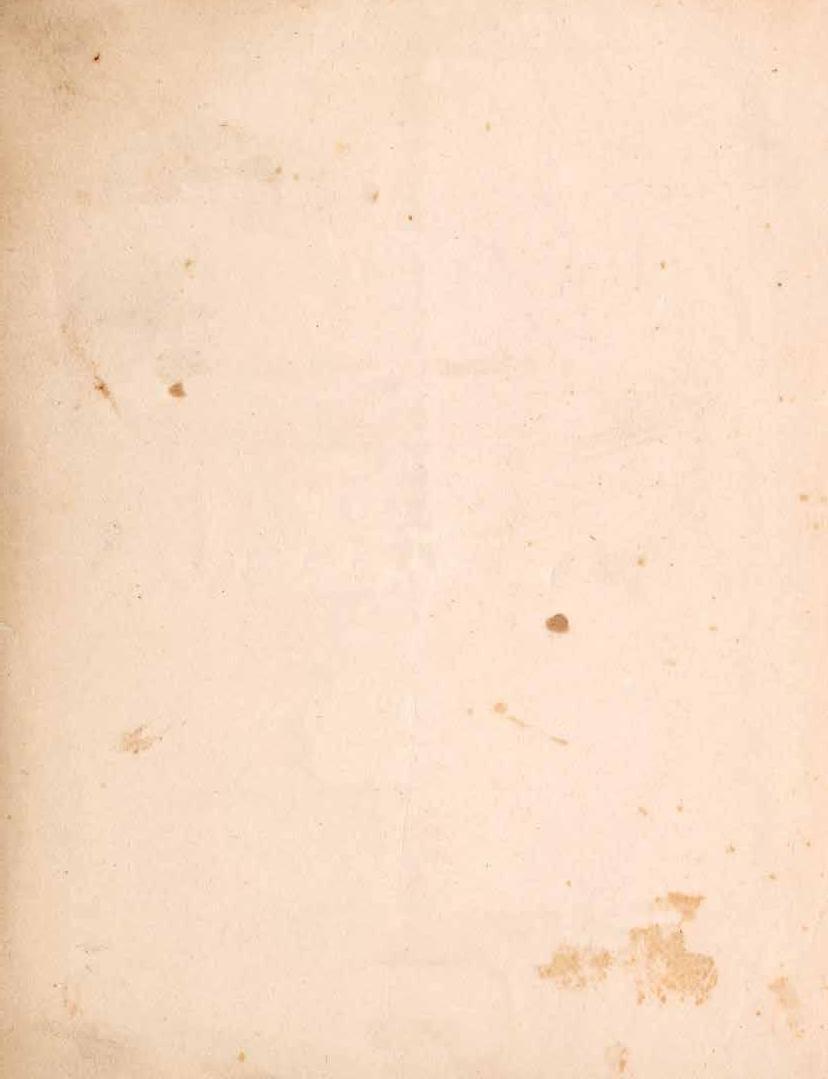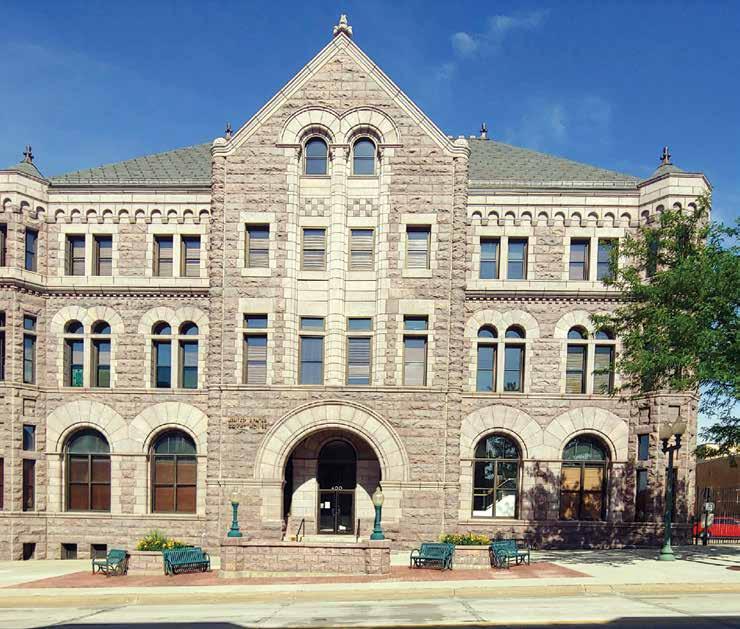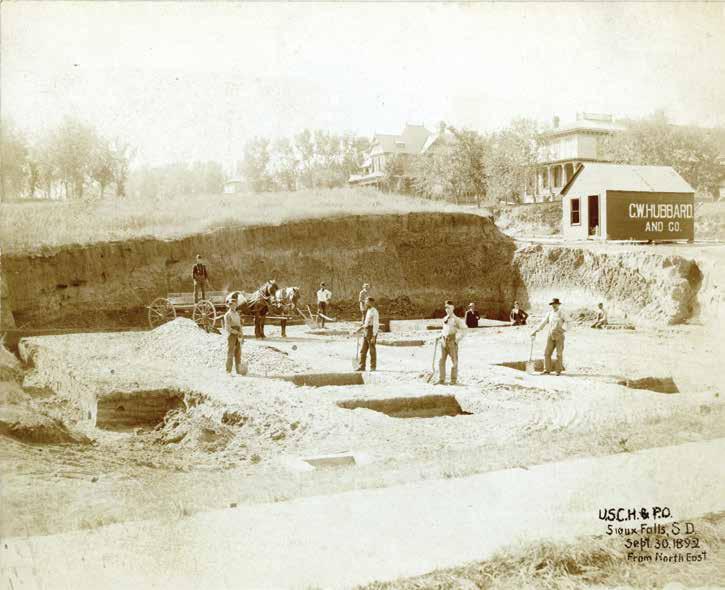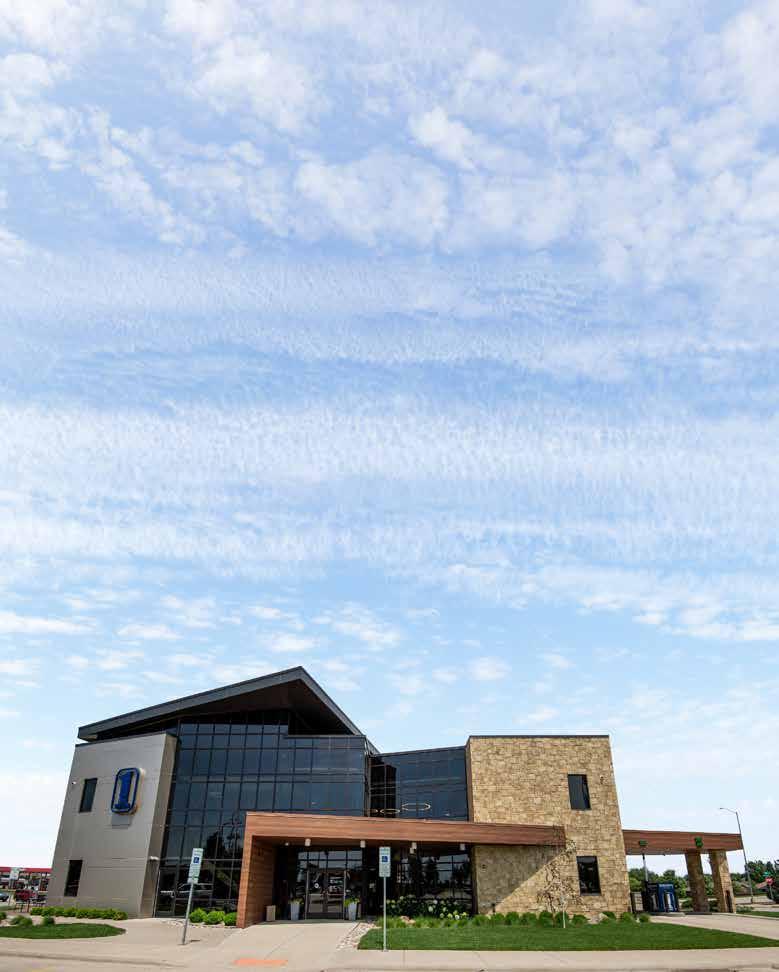
5 minute read
The Government Building
title
Original government building
Advertisement

The Government Building
BY WAYNE FANEBUST
In the 1880s and the 1890s, the people of Sioux Falls would have been hard pressed to find someone more public spirited than R. F. Pettigrew. Although politics was his primary pursuit — and while serving in the U. S. Senate, he still devoted time and effort toward building and improving the city that he loved. If there had been an office entitled “Booster in Chief,” Pettigrew would have claimed it and worn it with honor and pride.
In 1892, Senator Pettigrew introduced a bill in Congress for the construction of a public building in Sioux Falls. He had little or no trouble getting the bill passed into law, but the location of the project would prove to be problematic. Pettigrew knew exactly where he wanted it built, namely the southeast corner of 12th Street and Phillips Avenue.
Other businessmen, hostile to the Senator, including Wilmot W. Brookings and John McClellan, wanted it built further to the north on Phillips Avenue where they had property and commercial interests. Brookings and McClellan were among the first white setters in Sioux Falls and both were well-respected. Early on, the site selection was shaping up to be a hard fight.
Pettigrew loved a good fight so he and his associates formed a syndicate that included out-of-state investors. They immediately went to work buying and developing property on south Phillips Avenue, while grading that street south to the railroad tracks of what was called the Omaha line. The other group of boosters was equally determined and it was said
Government building at present time.
they offered the federal government a free lot at 8th Street and Phillips Avenue.
As it turned out, a number of sites were presented to the U. S. Secretary of the Treasury, with prices ranging from $1000.00 to $45,000.00. An agent from the treasury department came to Sioux Falls to inspect each prospective site, but settled on 12th and Phillips. Perhaps the agent was impressed with the 35 foot petition signed 1000 Sioux Falls men, all of whom agreed with Pettigrew’s choice for the new facility. But the north end men were not willing to quit and the fight moved to Washington, D. C.
Pettigrew’s syndicate was represented by his friend, Thomas H. Brown, who owned property on South Phillips Avenue, including the lots destined to become the site of the new government building. The north end men were represented by Hosmer H. Keith, a prominent Sioux Falls attorney. Unfortunately for Keith, he was introduced to the treasury department by Nehemiah Ordway, a notorious man who had once been the governor of Dakota


Territory in the early 1880s. Because of a long and ugly battle with Pettigrew, that got national attention, bias and skullduggery were suspected. A renewal of the great Ordway/Pettigrew feud was something that nobody in the federal government wanted to see or hear. Keith left Washington disappointed. Pettigrew had notched another win. The federal government paid Brown $8000.00 for the two lots.
When it came to the matter of building the new facility, Pettigrew again wanted
View of government building from the northeast, September 30, 1892.


to be in control. He wanted it to be constructed with hard, durable quartzite stone from local quarries. But when discovered that the specifications called for a softer stone, like sandstone, an alarmed Pettigrew visited the Secretary of the Treasury and caused the specifications to be changed so as to eliminate all but quartzite.
Construction bids were submitted and Pettigrew’s friend, political ally and former Sioux Falls mayor, Jacob Schaetzel, was selected to do the excavating work. C. W. Hubbard, the manager of the Sioux Falls Granite Company, got the contract for the stone work. There is some confusion in the record about the source of the quartzite and it was believed that it came from Jasper, Minnesota. But Hubbard had for years been operating out of quarries located in East Sioux Falls, so it seems unlikely that the stone would have been hauled from Jasper, when some of the finest building stone was only seven miles away from Sioux Falls. That the stone came from East Sioux Falls would be consistent with Pettigrew’s desire that the entire project be done locally. Work began in 1892.
The design of the structure was that of
View of government building from the southwest, June 30, 1893.


the Richardson-Romanesque style that was so popular in the 1890s. The designer, during the initial phase of construction, was W. J. Edbrooke. The massive, but graceful building that today represents the best of the artist’ hand and intellect, as well as the stone cutters unique skill, stands a reminder of an era when men like Pettigrew led the advance into the future with bold strokes. That it was built during a great depression following the financial “Panic of 1893,” makes it all the more impressive.
A Sioux Falls newspaper proudly announced that on May 17, 1895, the new government building was opened to the public. Flocks of curious folks arrived to inspect the new $175,000.00 facility that included a spacious post office, a courtroom and other offices including that of the postmaster, A. D. Tinsley. All were impressed and the general consensus was that the money had been well spent. In 1911, a third story was added and in 1931, an addition was built on the east side of the building. The structure is one of Sioux Falls’ finest examples of stone architecture. Standing gracefully, it is a rock solid reminder of the past in the heart of an ever-changing city.
at home 24 Charm in the City’s Core
recipes 36 Sweet Summer Treats
man in the kitchen 40 The Completion Backwards Principle
vino 44 The Black Rooster
knick knacks of life 48 Mistakes Do Happen

nest


